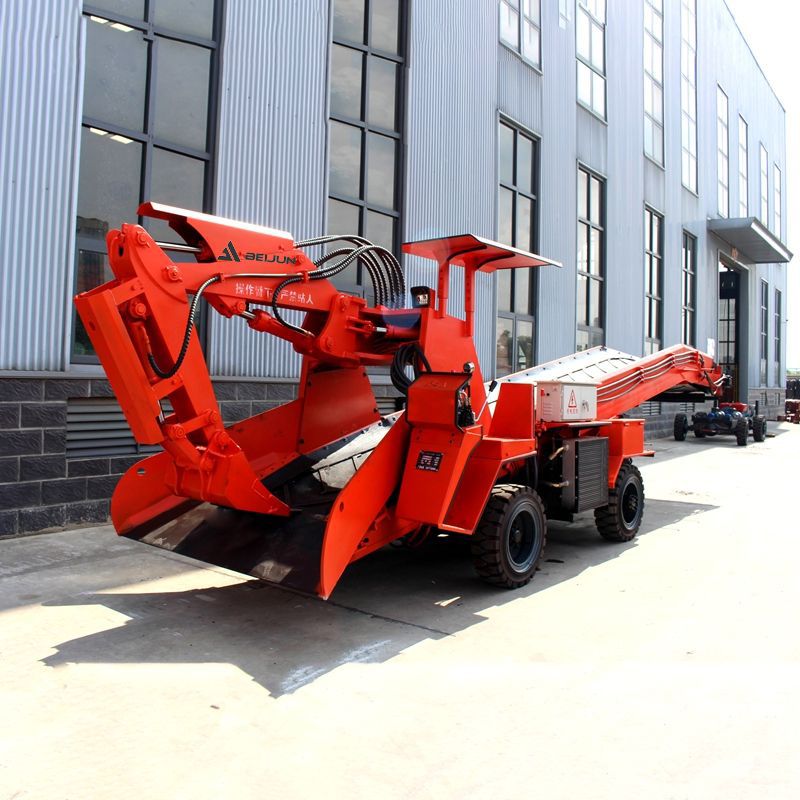6 Essential Pre-Operation Safety Checks for Scrapers: Key Steps to Ensure Efficient Construction
In engineering scenarios such as mining operations and tunnel excavation, Mucking Loader serve as core loading equipment whose pre-operation inspections directly impact construction safety and efficiency. Standardized and meticulous pre-inspections can not only identify equipment defects in advance but also ensure all systems operate at optimal performance. This article analyzes six critical pre-operation checks for scrapers from a practical perspective, helping engineering teams achieve safe and efficient construction.
1. Structural Component Integrity Inspection
First, habits a systematic visible inspection of the equipment's appearance: Focus on detecting deformation, cracks, or immoderate put on in key working factors such as the scraper bucket and scraper chain, whose overall performance without delay determines cloth managing efficiency. Next, take a look at the tightness of all connecting bolts (e.g., body hinge points, hydraulic cylinder mounts) – unfastened bolts can also reason aspect detachment and protection hazards. Finally, look at tire strain and put on to make sure balance and passability at some stage in gear movement.
2. Power System Pre-Start Debugging
As the "heart" of the equipment, the engine system requires special attention: Before starting, confirm that the engine oil level is within the specified range and observe for emulsification or contamination, as inadequate lubrication can lead to severe damage like cylinder scoring. Check coolant level and freeze point to prevent engine overheating ("boiling") in high-temperature conditions. Ensure sufficient fuel supply and a clean fuel filtration system to avoid injector damage from impurities. After starting, listen for unusual engine noises – abnormal vibrations or sounds require immediate shutdown for troubleshooting.
3. Hydraulic System Performance Testing
The stability of the hydraulic system directly affects the precision of scraper movements: First, verify that the hydraulic oil level in the tank meets the standard – insufficient oil can cause pump cavitation and component damage. Examine oil color and viscosity, replacing emulsified or turbid oil promptly. Inspect all pipeline connections for leaks, as minor seepage may escalate into critical pressure loss. Finally, test the smoothness of hydraulic cylinder operations to ensure no sticking in movements like bucket lifting/lowering or scraper chain rotation.
4. Electrical Control System Calibration
Modern scrapers rely on precise electrical control systems: Check battery charge levels and terminal connections for oxidation or looseness, which can cause starting issues or signal malfunctions. Test the responsiveness of operation handles and buttons to ensure all function switches (e.g., lights, alarms) work correctly. In underground environments, pay special attention to the integrity of work lights and front/rear lighting systems – clear visibility in low-light conditions is essential for safe operations.
5. Lubrication System Maintenance
Follow the tools guide to refill lubricants at hinge points, bearings, chains, and different lubrication points: Use advocated lubricants (oils/greases) to keep away from overall performance troubles from blended types. Clean particles and filth round lubrication factors to make sure tremendous grease penetration. For automated lubrication systems, check out pump operation and pipeline patency, adhering to the protocol of "clean first, lubricate second, shield last."
6. Safety Protection Device Verification
Safety devices are the final line of defense for construction safety: Test service and parking brakes to ensure reliable stopping on slopes. Check warning lights, buzzers, and other signaling devices to ensure surrounding personnel can detCheck warning lights, buzzers, and different signaling gadgets to make sure surrounding personnel can observe gear movements. Confirm that protecting covers (e.g., engine guards, hydraulic line shields) are intact and secure, stopping accidents from rotating components or high-pressure fluids.
By imposing these six standardized inspection procedures, the chance of unexpected tools screw ups can be extensively reduced, bettering development continuity. It's essential to notice that inspection priorities can also fluctuate for scrapers in distinct working prerequisites (e.g., mining vs. tunnel models) – customise pre-inspection checklists primarily based on gear manuals. Regular pre-operation inspections are no longer solely fundamental for protection however additionally key to extending gear lifespan and decreasing preservation costs.
Beijun Machinery's professional scrapers are designed with "safety and efficiency" at their core, equipped with intelligent fault warning systems to simplify pre-inspection processes.



